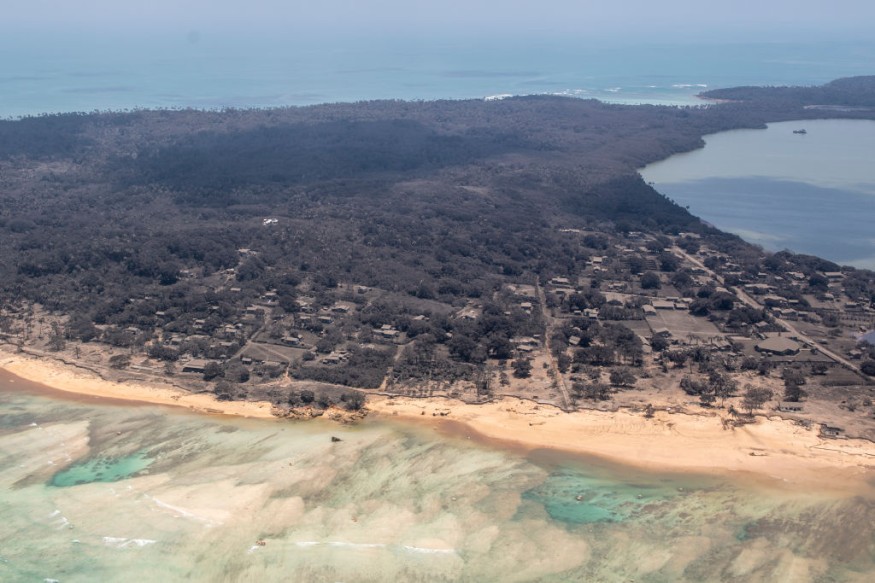
The worldwide tsunami that followed after the massive explosion of the Hunga Tonga-Hunga Ha'apai volcano on January 15, 2022 was quite 'exceptional' for scientists.
The tsunami following the catastrophic explosion had a global reach at faster propagation rate, unexpectedly high wave heights, and an unheard-of duration, SciTech Daily reported. The volcanic eruption was the largest recorded since the eruption of Krakatoa in 1883, triggering tsunami waves of up to 15m which struck the west coast of Tongatapu, 'Eua and Ha'apai, Relief Web reported.
Scientists explain in a new study published in the journal Nature the process that produced such an unusual event.
According to first author Rachid Omira, a researcher at Instituto Dom Luiz, Faculty of Sciences of the University of Lisbon (Portugal), the violent explosion of the Hunga Tonga-Hunga Ha'apai volcano in the South Pacific was "a source of both noticeable atmospheric waves and an exceptionally fast-traveling global tsunami with minimal dissipation in the far-field."
First-ever Record
The author notes that the Tonga explosion in early 2022 was "the first time that a volcano-triggered tsunami was globally recorded by modern, worldwide dense instrumentation, thus providing a unique opportunity to investigate the role of air-water coupling processes in tsunami generation and propagation."
To show what caused the displacement, the research team looked into satellite, sea-level, and atmospheric data from all over the world, including used numerical and analytical models. They found that the tsunami was driven by a constantly moving source and caused by an acoustic-gravity wave generated by the volcano explosion traveling several times across the globe.
The scientists conclude that their models show the unusually fast travel times and long duration of the tsunami, as well as its global reach, consistent with an air-water coupled source.
This coupling mechanism created clear hazard implications that rose abruptly from long stretches of landmasses and deep ocean waters.
Challenging Part
While it is now known that violent volcanic explosions can cause global tsunamis, scientists add some factors which include how the massive movement excited the atmosphere-ocean interface, and triggered acoustic-gravity waves. In spite of modern worldwide tools, phenomenon such as this can be quite challenging to study.
In fact, Rachid Omira notes that the challenging part of studying the Tonga tsunami was "to quantitatively explain all the observed tsunami features that were completely different from those of common tsunamis."
"A fast-moving atmospheric wave able to excite the ocean surface and pump energy into it was our explanation for this tsunami that "jumped" from an ocean to another and reached the coast of Portugal 10 hours earlier than expected", he added.
The direct correlation between the tsunami and the acoustic-gravity waves' arrival times also confirms that these phenomena are closely linked, the authors wrote.
The Tonga eruption indeed produced pressure waves that rippled around the globe, which are "extraordinarily infrequent" on human timescales. It is a global reminder for scientists that even the "smallest quirks of physics" can lead to global consequences, Quanta Magazine wrote.
Related article : Heavy Rain and Massive Flooding over the Southern United States to Move Toward the Lower Mississippi Valley
© 2025 NatureWorldNews.com All rights reserved. Do not reproduce without permission.





